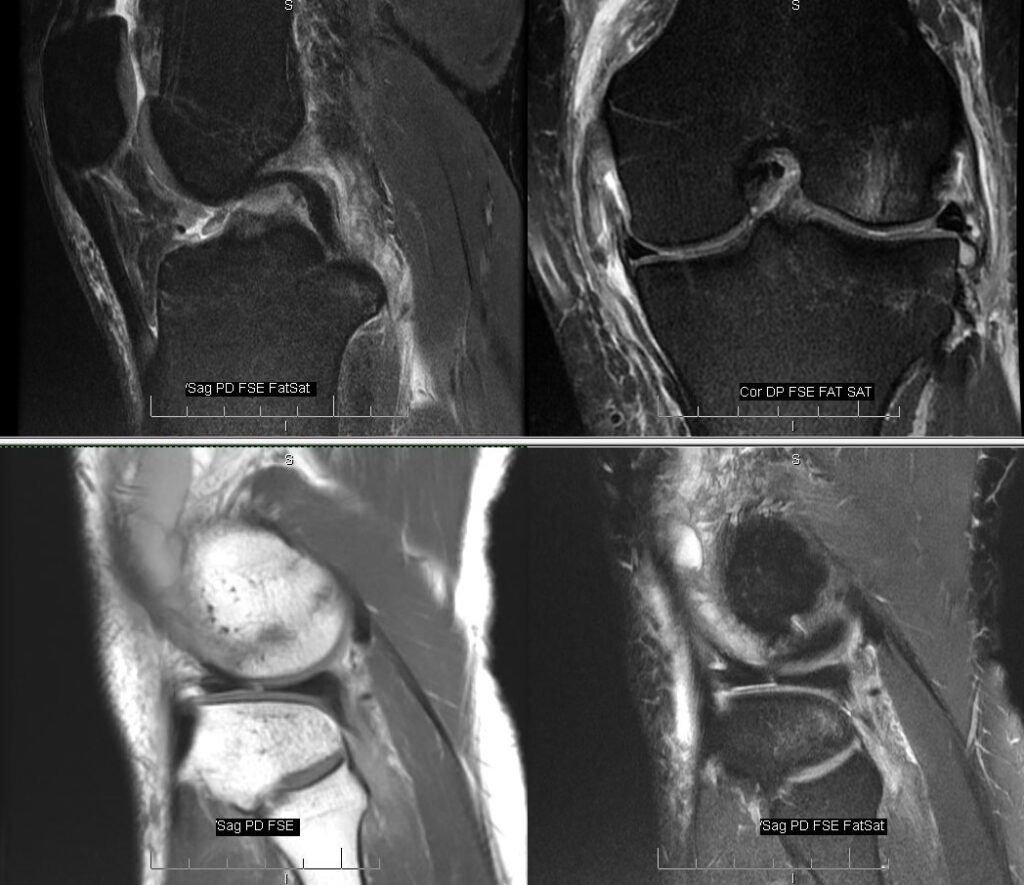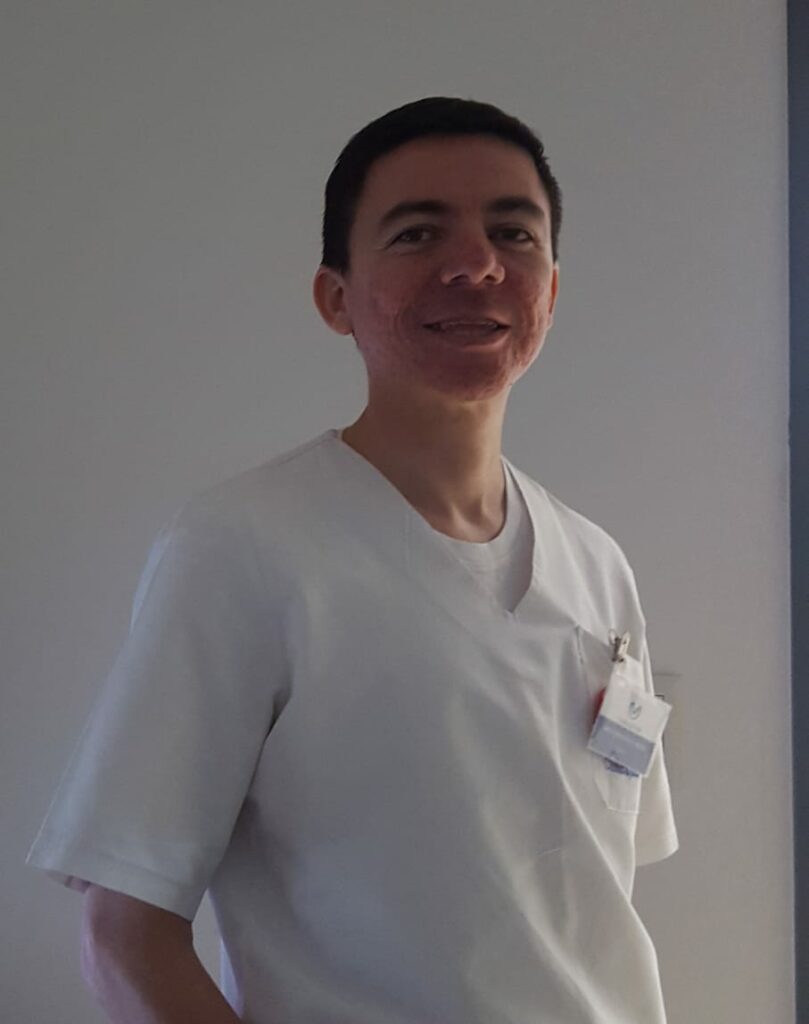
Paciente masculino 25 años, estudio solicitado por esguince grave 2 semanas de evolución
Diagnóstico: Triada de O´donoghue
Características generales: La triada de O´donoghue, también llamada terrible triada o triada infeliz corresponde a la rotura del ligamento cruzado anterior, ligamento colateral medial y ruptura del menisco medial, secundario a un esfuerzo en valgo sobre la rodilla en flexión y rotación externa, es más común en jugadores de fútbol americano y traumatismo severo
Claves diagnósticas:
MRI: Nos permite evaluar las tres lesiones, las mejores secuencias para identificarlas son:
- T1: A nivel de ligamento cruzado anterior y ligamento colateral medial se observa disrupción-ruptura del mismo y sobre el menisco trazo hiperintenso con compromiso de su superficie libre
- DP FAT-SAT Y STIR: A nivel de ligamento cruzado anterior y ligamento colateral medial se observa disrupción-ruptura del mismo e Hiperintensidad adyacente y sobre el menisco medio trazo hiperintenso con compromiso de su superficie libre
Bibliografía
- Bone Contusion Patterns of the Knee at MR Imaging: Footprint of the Mechanism of Injury, From the Department of Radiology, Wilford Hall Medical Center, Bergquist Dr, the Department of Radiology, University of Texas Health Science Center, San Antonio; the Department of Radiology, Thomas Jefferson University Hospital, Philadelphia, Pa; Indian Wells, Calif; the Department of Radiology, Stanford University School of Medicine, Stanford, Calif; and the Department of Orthopedics, David Grant USAF Medical Center, Travis AFB, Calif. RSNA scientific assembly. Oct 1 of 2000
